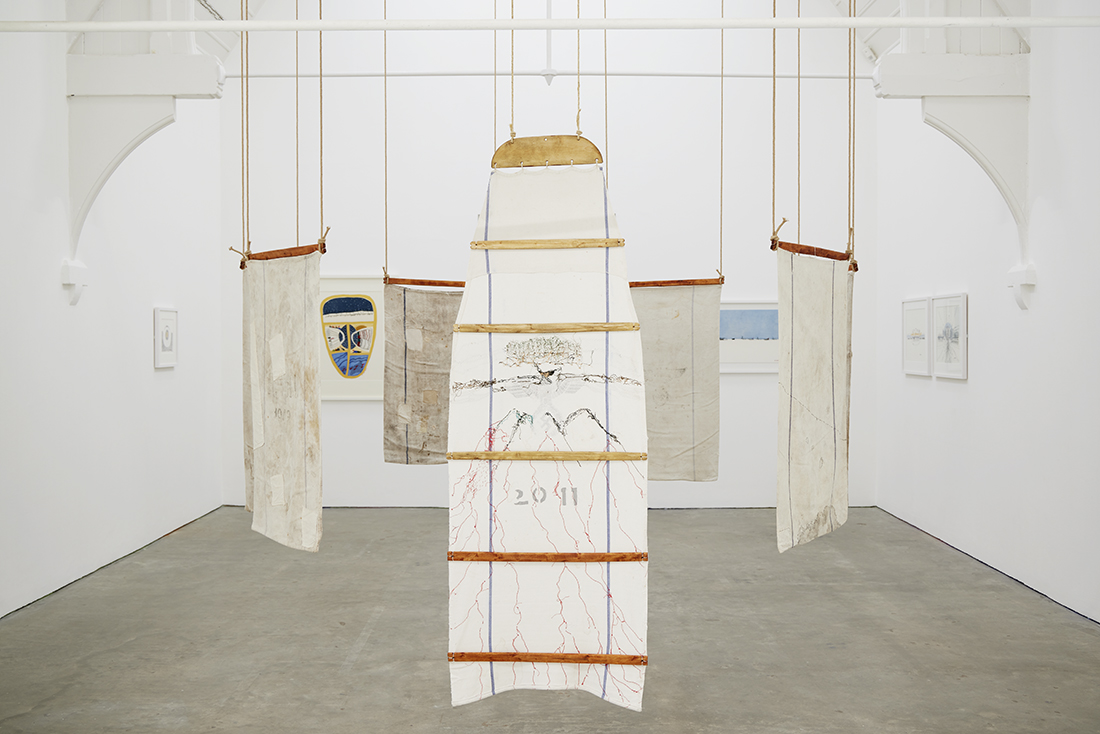
Britta Marakatt-Labba, Dáhpáhusat áiggis, 2013 [Events in Time] Sámi Dáiddamagasiidna – RiddoDuottarMuseat. Photo: Stuart Whipps © Ikon Gallery © Britta Marakatt-Labba/Bildupphovsrätt 2025
Events in Time, 2013
Britta Marakatt-Labba
Runtime: 02:31
Britta Marakatt-Labba: “Events in Time” is about what happened on Utøya in 2011, when so many young people lost their lives while attending a political camp. I came across – purely by chance – some old flour sacks from the Second World War, and on them I could clearly see the symbolism, the Nazi symbolism. I thought: perhaps this is something I could use – to weave together the history of the Second World War with what happened in 2011, because that shooting took place with a similar kind of ideology behind it.
These young people who travelled to Utøya, to the island, they thought: surely this is safe. To be on an island is safe– here we can feel secure while this camp is going on. But it’s not always like that. When you open a door to something unknown, you never know what you’ll find on the other side of the closed door.
I twisted and turned that flour sack over, and over again. And I thought: I could use this sack as a door. And then the other six parts – I could arrange them into a circle, and that would form an island. At the same time, it could also be a dwelling – a kåta, (a hut) for example. On the door that opened inwards, I embroidered the island – and then a lot of young people, floating in the water. Because many of them had to throw themselves into the fjord in order to survive.
The man who did the shooting – I gave him two different faces. He had several faces, because he pretended to be a police officer. So it has a deceptive or double meaning. He fired wildly, and based on the eagle symbolism, I embroidered the weapons and bullets that were fired. Because there were so many – almost a hundred young people who lost their lives. Their roots were cut off. They were not allowed to continue living.
But when you step into this circle, you can read “2011”, on the back –as that’s when it happened. Then you can walk around and look at the images. There is very little embroidery on the other sections – I’ve mostly let the passage of time itself leave its mark on the sacks.